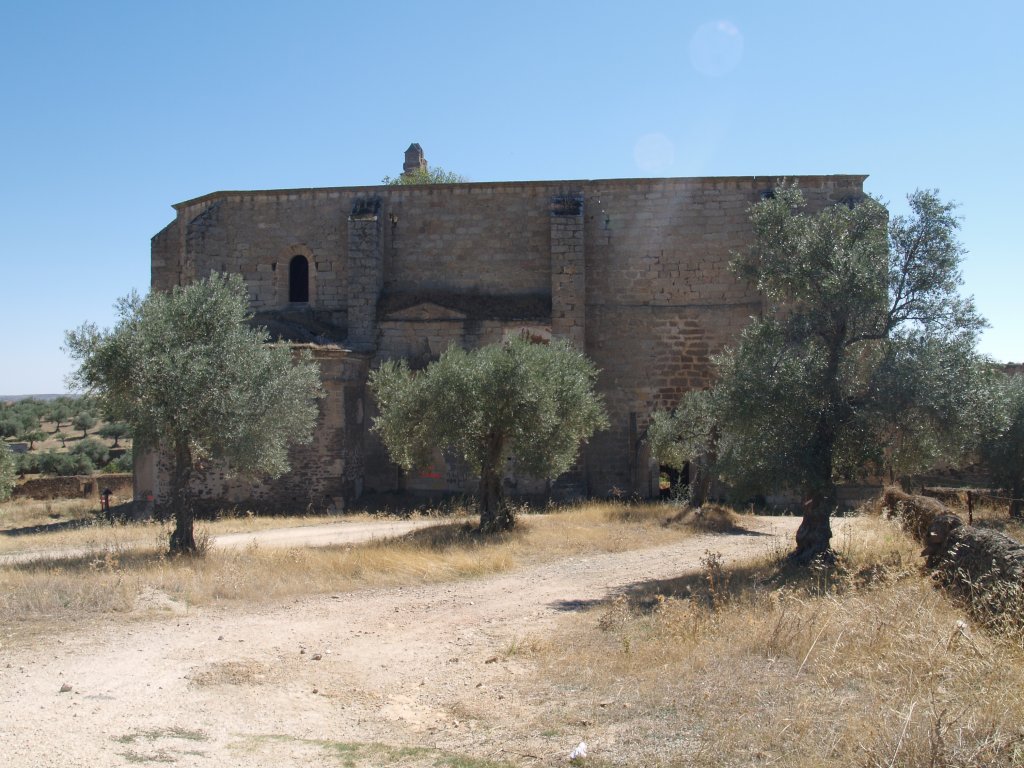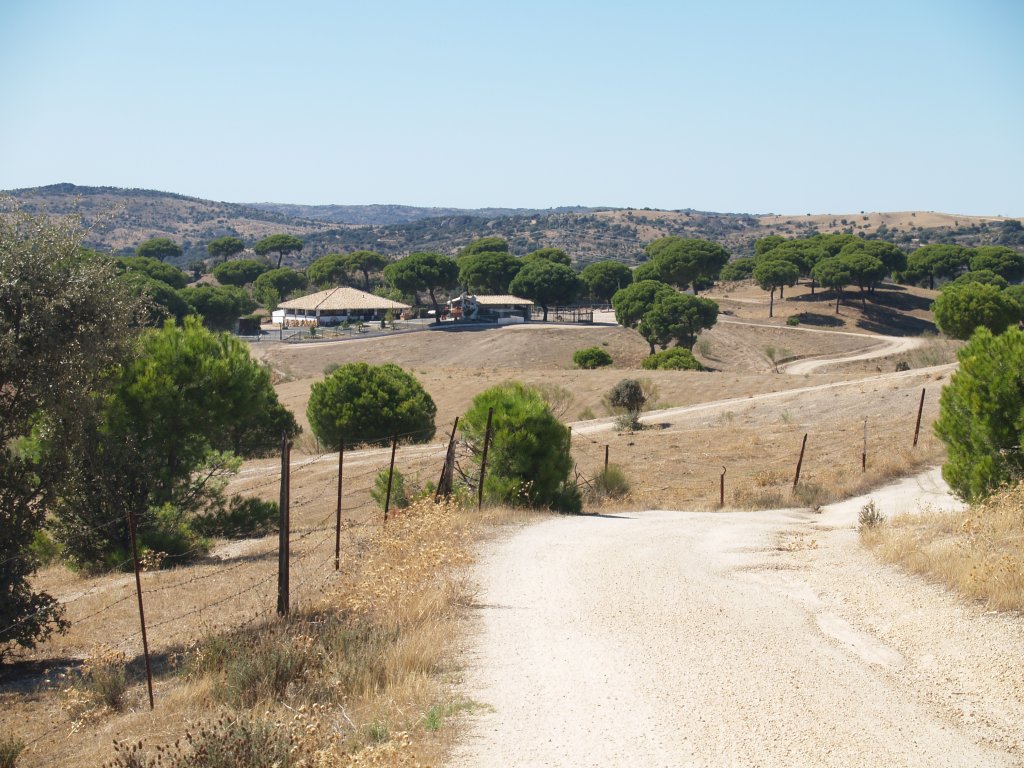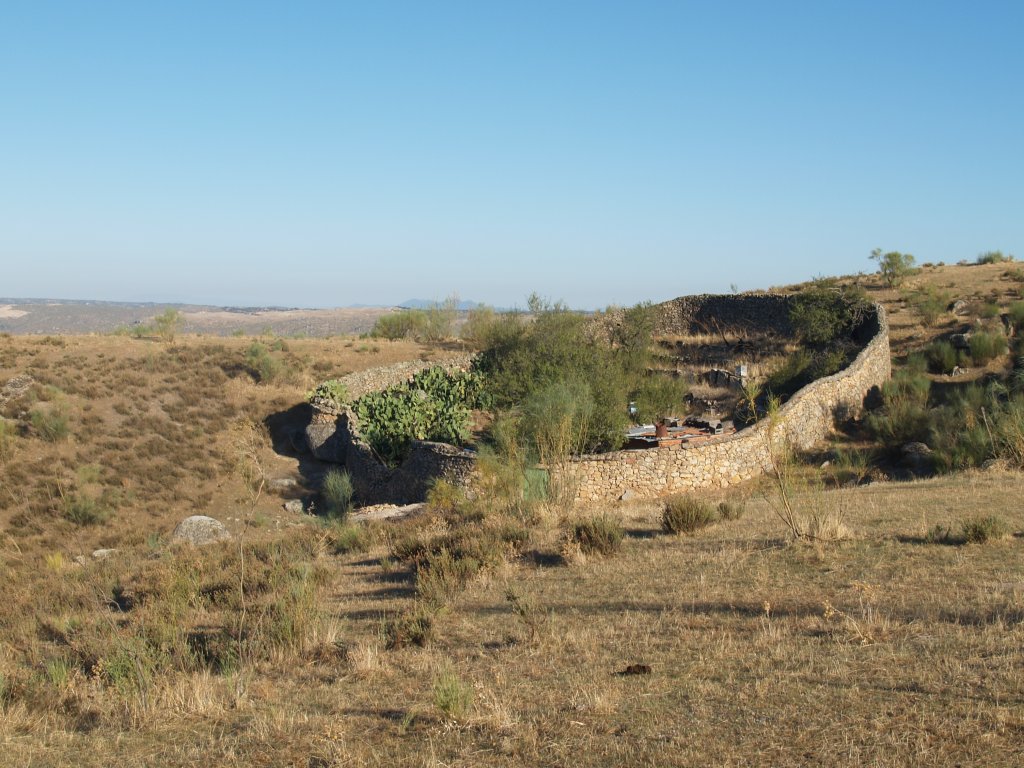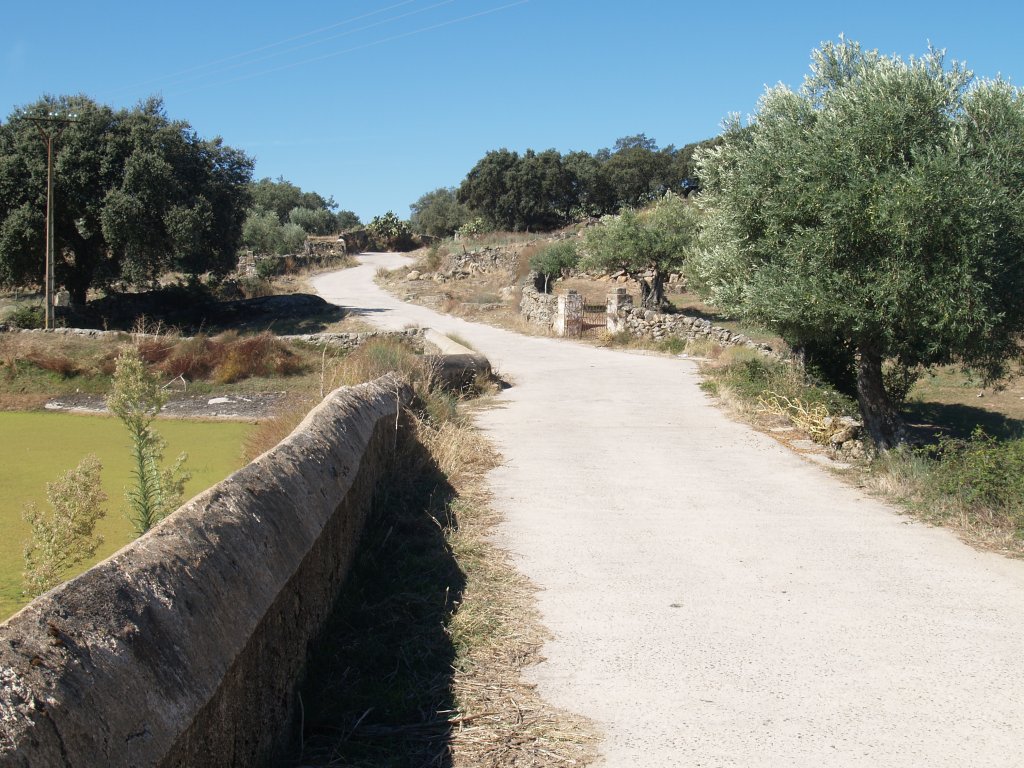Stage 38: Garrovillas de Alconétar - Mata de Alcántara
Description

Through Pinar de Garrovillas
This long Stage provides an opportunity to enjoy a variety of landscapes, including amazing pine forests at Garrovillas, with large rock formations; steppe areas throughout the route; and tree-thinned, holm oak forests with large trees.
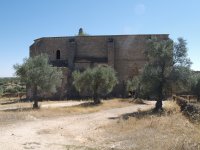
The route turns left at the Shrine of Cristo del Humilladero, located on the outskirts of Garrovillas. Well worth a visit is the Convent of San Antonio de Padua, a monument typical of the times of Ferdinand and Isabella, the Catholic Monarchs, located to the left of the path.
This first part of the Trail, through pastures, olive trees and holm oaks (Quercus ilex), leads the traveller along a comfortable, wide track to Garrovillas' pine forest. The Nature Trail overlaps the "Ruta de los Almendros", one of the routes included in the TRANSLANA project, a community initiative between Spain and Portugal to develop and promote ancient cultural trails.
The Trail passes near a farmhouse after which it crosses a gate. From here, the route, which is narrower and more winding, leads to Rehana Brook. After crossing the brook, the path becomes easier to walk. One can enjoy the views of the large granite rocks that dot the path, creating a striking landscape.
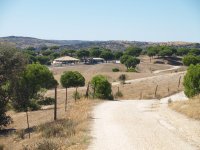
In places, the rolling landscape of granite rocks is broken by stone pine stands (Pinus pinea) that compete with holm oaks. The pine forest produces pine nuts, a natural resource exploited not only by humans, but also by birds that feed on forest fruits. The path becomes increasingly steeper. Some areas even have wooden steps directly embedded in the ground to help in the steeper areas. Atop the hill, next to the path, is a beekeeping operation, similar to the Asturian "cortín". There are breath-taking views of the pine forest from the site called Peón, next to a quarry.
The Trail continues atop this hill, along a comfortable track that crosses through vast areas of reforestation and scrubland. The Alcántara Reservoir can be seen from the livestock farm located here. The landscape remains unchanged for a long way. Roaming livestock appear constantly, especially where ponds or lagoons are used by the animals as a watering hole. The Trail traverses through several hunting grounds, which are sometimes closed with gates, or equipped with cattle grids.
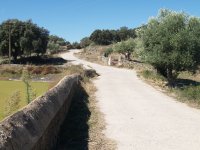
The landscape changes slightly as the route approaches a summer pasture, near a brook, where the cattle graze. On several occasions, the Stage crosses over small waterways, including the River Alcalfe, where there is a bridge, and the Rivera de la Mata Creek, with a stone ford. The green pastures contrast with the rest of the landscape. The bush landscape that has been the norm throughout the route gives way to holm oaks and olive trees.
Very close to the endpoint, the Stage ventures into a holm oak forest with ancient trees that provide the traveller a beautiful image. It is possible to see large groups of vultures, easily more than 20, flying quietly over the area. There is a rest area with tables and benches, and a few rustic wooden steps, where the traveller can rest. The path leaves behind the oak forest, skirting around a small dam, to continue along the road that directly leads to the town of Alcántara.
After travelling more than 35 km through a variety of landscapes, including the rough terrain near Pinar de Garrovillas or the rugged areas populated with scrub and holm oaks, typical of Extremadura, the route ends in this town.
Profile
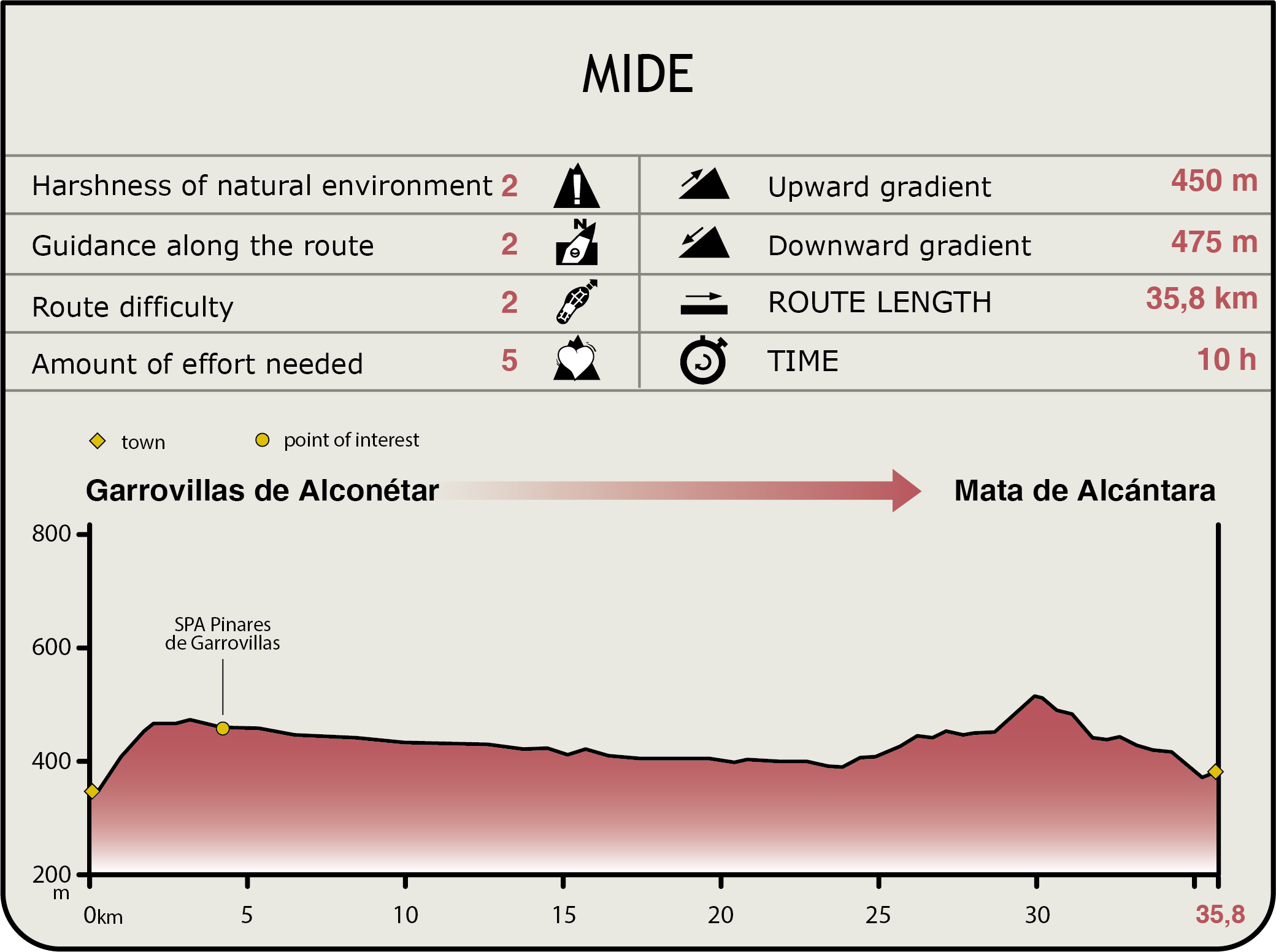
MIDE (Method for the Information of Excursions)
Featured
Further information
Church of Santa María de Gracia
Located at Mata de Alcántara, the church dedicated to Nuestra Señora de Gracia was built in the sixteenth century, although the square tower was added in the seventeenth century.
The single nave has a magnificent star-ribbed vault from the late Gothic period. Pedro de Ibarra was the architect.
Pinares de Garrovillas SPA
This nature area located just west of Garrovillas, in the central-western province of Cáceres, has several waterways, including Rehana Brook and Garciacaballero Creek.
Pine trees and vast extensions of pseudo-steppe with grass surrounded by broom thickets (Retama ssp.). populate the landscape. Black Storks (Ciconia nigra), an endangered species, and Bustards (Otis tarda).
